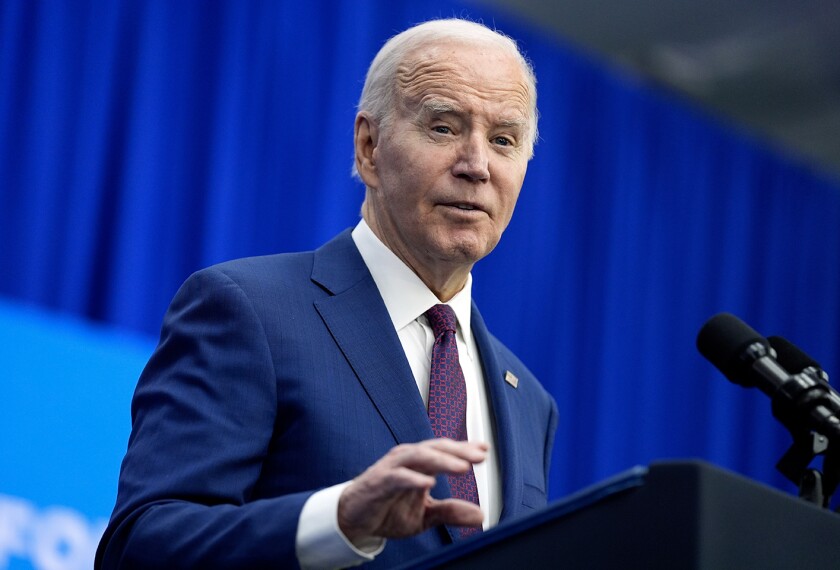The federal government may have provided tens of billions of dollars to schools in coronavirus relief, but that doesn’t mean there’s no tension about the amount of money going to K-12 as educators grapple with the pandemic and its fallout.
A prime example: a a split featuring Democratic members of Congress on one side and Wisconsin’s state legislature on the other.
Late last month, Rep. Mark Pocan, D-Wis., a member of the U.S. House subcommittee that handles federal education spending, shared a letter from U.S. Department of Education official to Wisconsin’s state schools chief expressing concern that a K-12 funding proposal in the legislature might run afoul of requirements that states maintain certain spending levels on education in order to access the aid.
At issue is a plan from Wisconsin’s Joint Finance Committee to create a $350 million stabilization fund in the state’s biennial budget that could be used for K-12, but also other state expenses. The worry is that this fund might not dedicate sufficient resources to public schools, and that lawmakers could direct it to other parts of the state budget.
“We are concerned that this proposal may have an impact on the State and its local educational agencies ... to comply with Federal fiscal requirements if the funds, in fact, are not appropriated for public education,” Ian Rosenblum, the acting assistant secretary for elementary and secondary education, wrote to Carolyn Stanford Taylor, the Wisconsin state superintendent, on May 28.
Pocan characterized this letter as proof that the plan from Wisconsin’s legislature, which is controlled by Republicans, “would disqualify Wisconsin from receiving $1.5 billion in federal COVID aid” for education, including higher education as well as K-12, although Rosenblum didn’t state this directly.
About two weeks later, after recruiting some Capitol Hill allies who also represent America’s Dairyland, Pocan broadcast this concern again in a June 10 letter to GOP leaders in the legislature, Senate Majority Leader Devin LeMahieu and Assembly Speaker Robin Vos.
“Our state legislature must step up and ensure Wisconsin can take full advantage of these funds,” the federal lawmakers wrote, referring to COVID-19 relief aid. In addition to Pocan, fellow Wisconsin Democrats Rep. Ron Kind, Rep. Gwen Moore, and Sen. Tammy Baldwin signed the letter.
LeMahieu’s office didn’t respond to a request for comment; a spokeswoman for Vos did not provide a response from the legislator by late Friday.
But late last month, a GOP lawmaker involved in drafting the plan told the Milwaukee Journal-Sentinel that while the plan carried some risk with respect to federal aid, “The risk is manageable,” and that upcoming decisions by state lawmakers could address the concerns.
Wisconsin isn’t the only place where the link between state spending on schools and federal relief has created some angst. The federal maintenance of effort requirements triggered a clash between state Republican officials in Texas and school district leaders, who lobbied against what they called an alarming delay in the release of federal aid. (Reportedly, the dispute has hinged on higher education relief but affected the K-12 aid as well.) In late April, Gov. Greg Abbott, a Republican, agreed to release $11 billion to districts immediately. There was also tension in Michigan over conditioning federal relief on schools agreeing to hold a certain amount of in-person learning time.
States can seek waivers from maintenance of effort requirements, both in general and specifically related to the three COVID-19 relief packages, if they can demonstrate certain circumstances, such as a decline in state revenues.
The three relief packages don’t all handle maintenance of effort the same way.
For example, the Education Department says that in order to receive aid under the second COVID-19 relief package enacted in December 2020, states must agree to maintain K-12 spending for fiscal 2020—effectively, for the 2021-22 school year—so that it’s proportionally the same as it was on average for fiscal 2017, 2018, and 2019 relative to overall state spending.
Yet that’s not how the provision works in the CARES Act of March 2020, the department says.
In general, state budgets have not been hit as hard by the coronavirus pandemic as previously feared.
Just because the economy is less dire than many predicted months ago doesn’t necessarily mean states will take a corresponding view of their K-12 budgets. It remains to be seen how the pandemic, as well as other more tangential issues—like an increasingly bitter national fight over whether critical race theory is a burgeoning and disturbing development in public school classrooms or a cudgel being used by political opportunists to foment a misplaced cultural dispute—affect funding decisions.






